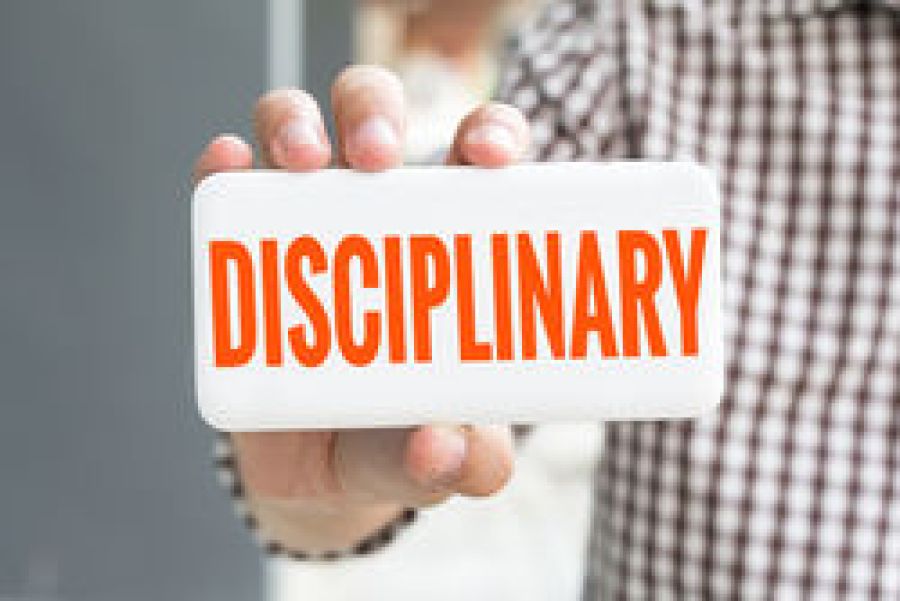Blog

Blog
Call us today for a free initial consultation on 0800 772 0341
How disciplinary action works
Published 15 July 2019


It’s inevitable that we will all make mistakes and given the opportunity to correct the situation most of us are likely to take it.
For anyone who has ever faced disciplinary action at work it can be a daunting and unnerving experience.
The idea that the disciplinary procedure is designed to address and correct a concern, will probably not strike you as its most obvious purpose.
But that is exactly how the ACAS Code of Practice guidance advises employers to implement it.
ACAS say the procedure should be used primarily to help and encourage employees to improve, rather than just as a way of imposing punishment (1). It should help with any apparent shortcomings in conduct or performance and aid an employee to become effective again.
Understanding exactly how disciplinary action works is something all employers and employees should be aware of.
An organisation should have a disciplinary procedure in writing, and it should be made easily available to all staff. It will document rules and detail what type of behaviour, actions or conduct may lead to disciplinary action, and what that action is likely to be.
Disciplinary matters for even the most trivial of matters can quickly escalate and become more of a problem than they need to be.
A travel agency manager was reportedly awarded over £84,000 after a London employment tribunal found he had been subject to race discrimination and victimisation by his former employer (2) Highlighted during the case was the manager’s failure to use headed paper for invoicing, described by the judge as ‘a trivial error, if error it was’.
Where it is appropriate employers should try to resolve disciplinary matters informally. Such an approach will not work in all cases, and an employer may opt to go straight to the formal disciplinary process.
If the formal process is instigated there are certain minimum steps that must be adhered to for the process to be fair (3)
Ensuring the process is fair and reasonable is of paramount importance, as a dismissal can be found to be unfair if the process is unfair.
The first stage of the disciplinary procedure can include suspension when there is an allegation of serious misconduct (4). The suspension should be on full pay, kept as brief as possible and regularly reviewed to ensure it is still necessary.
An investigation should take place to establish the facts of the case. This may or may not include holding an investigation meeting with the employee.
An employee does not have a right to be accompanied at an investigation meeting. If the matter proceeds to a formal disciplinary hearing, the employee does have a statutory right to be accompanied at that meeting (5).
Prior to a disciplinary hearing taking place the allegations should be made clear and the employee provided with all of the evidence in advance. During the hearing the individual should be given a reasonable opportunity to present their case and ask questions.
The employee should be informed of the outcome of the hearing as soon as possible and without unreasonable delay. The decision may be provided verbally on the day and followed up in writing, or shortly afterwards in a time period specified in the disciplinary policy. In any event the outcome should be confirmed in writing.
The outcome to a disciplinary hearing can vary from the allegations being dismissed, a formal warning being issued, demotion where appropriate or dismissal.
In cases where a formal sanction is imposed an employee must be notified of their right to appeal. If the employee does choose to appeal they should write to the employer explaining the grounds for doing so.
The appeal hearing can sometimes be a rehearing, and if this is the case then it should be made clear in the disciplinary policy. The outcome will either uphold or reject the appeal.
References
1 Disciplinary process should be used to help employees improve [Internet] acas.org.uk Cited 8.7.19 http://www.acas.org.uk/media/pdf/p/3/DG_Guide_Feb_2019.pdf
2 Discrimination case award [Internet] www.peoplemanagement.co.uk Cited 8.7.19 https://www.peoplemanagement.co.uk/news/articles/travel-agency-manager-awarded-84000-race-discrimination-case.
3 Disciplinary Procedure [Internet] www.xperthr .co.uk Cited 8.7.19 https://www.xperthr.co.uk/faq/is-there-a-minimum-disciplinary-procedure-that-employers-must-follow/106932/.
5 Trade Union representation [Internet] Castle Associates Cited 8.7.19 https://castleassociates.org.uk/blog/legal-corner-right-trade-union-representation
A reputation built on success
If you're facing any of the issues in this article - or need guidance on disciplinary, grievance, or redundancy matters - call us today. Our expert Trade Union Representatives are available to represent you in crucial workplace meetings, with pay as you need support.